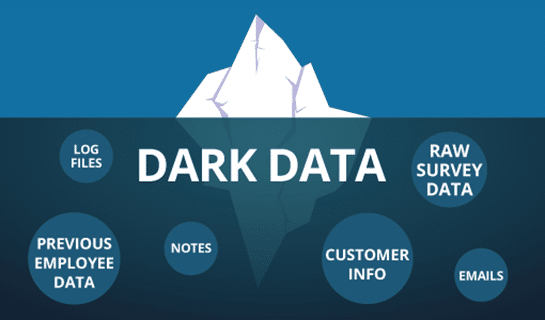The Dark Data Goldmine and How Can AI Help Companies Unlock It
According to Gartner, dark data is the type of information companies gather, but fail to proactively use. In 2020, 93% of all data was dark and unstructured. Most companies fail to realize that all the information collected during routine interactions with customers or their audience base generates enormous amounts of data—that can be leveraged with the right technology.
For most companies using mediocre software, dark data can pose more risk than opportunity. But there’s light at the end of this data black hole: Artificial intelligence (AI) developers learned how to leverage unstructured data to generate predictive capabilities, helping companies utilize the unused data. At SugarCRM, we achieved this performance by integrating AI predictive capabilities with SugarPredict. Here’s how this engine can help generate revenue from dark data, no matter its type (internal or public source).
 Using Internal Data to Generate Revenue
Using Internal Data to Generate Revenue
Companies gather data from all their customer interactions. From phone calls to emails to sales campaigns, all of this information is logged within the CRM. But before the handoff to sales, marketing holds the information that led to the lead becoming qualified and logs it within their system. With internal data spread across multiple systems, companies are unable to leverage it at its full potential, resulting in a large portion sitting idle and unused. Here are only some internal data sources that get lost and never used internally:
- Customer information
- Log files
- Email correspondences
- Account information
- Notes or presentations
- Old versions of relevant documents
In the presence of AI and machine learning, this information can be quickly analyzed and interpreted to become useful to your organization. Not all companies realize that departmental data has a company-wide significance.
For example, marketing should be well aware that sales can use information and data from their customer interactions in developing more efficient sales pitches. Lead information from Marketing can also offer sales information on lead product interest, qualification levels, etc. But to be valuable and ready to be leveraged at an organizational level, all marketing data has to be used and compiled by advanced analytics systems to generate more context on each lead. Thus, a centralized software built upon artificial intelligence might be a quick fix for this apparently minor issue.
Public Source Data
However, internal data is not the only type of unstructured data that can be used for company growth in the presence of AI and machine learning. Public source data is just as valuable. This type of information enables organizations to innovate and differentiate themselves from their competitors in the decision-making process.
When it comes to public source data, the rates at which it is unused and unstructured are staggering. The more you move away from internal company data into the web, the more potentially valuable data you’ll find:
- Public company records
- Public employee or employer profiles
- Mobile geolocation data
- Financial statements
- Previous employee information
- Raw survey data
This type of information gets lost and overlooked when it can increase revenue and consolidate market positioning.
Companies leveraging unstructured public source data can create innovative internal processes that correspond to the latest trends of software usage; they can invest in designing products and services that match general or niche market trends, invest in more specific training programs for their teams, or even get more insights into partnership opportunities, and more.
But the most relevant way in which they can leverage unstructured public data is by focusing on their main concern: To provide seamless customer interactions and experiences based on intelligent analytics and predictive capabilities.
While it isn’t easy to structure it to make sense to be used in corporate contexts that enrich internal data, machine learning and artificial intelligence can help companies leverage this type of information.
SugarPredict: Helping Companies Achieve Predictive Literacy

SugarPredict will analyze other deals you closed in the past and find situational similarities between those and leads in your database. Your company will now be able to explore the present and better manage future risks, opportunities, problems and better respond to company-wide challenges.
In the presence of its powerful AI engine, organizations can now leverage the full potential of unstructured data, whether it is internal or public-source data, directly from within their customer experience (CX) platforms. Similar technologies not only consolidate data but also make it visible and accessible across all departments. In the long run, this will help your company gain a more cohesive view of the customer and boost your company’s ability to provide extraordinary interactions and experiences, based on facts and numbers, rather than guesswork.
Although traditionally, only large corporations could enjoy the perks of AI, SugarPredict democratizes access to intelligent predictive software for all businesses.
Want to learn more about SugarPredict and how can it help your company unlock the dark data goldmine? Our SugarPredict Datasheet goes into detail about its AI capabilities!


 Using Internal Data to Generate Revenue
Using Internal Data to Generate Revenue